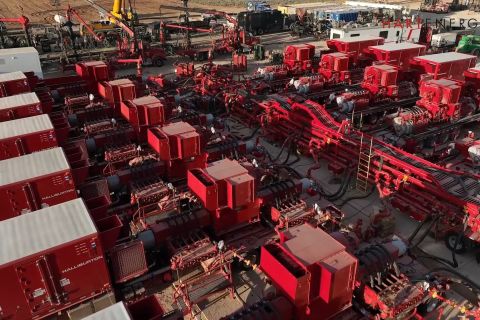One good turn deserves another.
That’s how Rice Investment Group (RIG) sees its role as a private-equity capital provider to oil and gas. The fund originated out of the multibillion-dollar 2017 sale of Rice Energy Inc. to EQT Corp. Now the Rice brothers are looking to fund investments that will further technology, best practices and data analytics—many pioneered at Rice Energy—in a capital-constrained energy space.
As it turns out, the strategy is about lowering cost, transferring technology, improving efficiency and hastening the day when the oil and gas industry regains favor in the public investment markets as a positive cash generator.
No one is speaking out of turn by noting the Rice brothers benefitted from oil and gas. The company was one of the great shale success stories during the last decade. Siblings parlayed a modest family investment into one of the more capital efficient and technically accomplished horizontal drilling Appalachian gas firms after 2007, culminating in a $1-billion IPO in 2013, followed by the $8.5-billion sale to EQT Corp., creating the largest natural gas producer in the free world.
According to Daniel Rice, former Rice Energy CEO and a board member for EQT, the merger was envisioned as a way to transfer best practices between two companies, implementing synergies that would make the surviving entity the lowest cost gas producer in the U.S. and a leader in further regional consolidation to create an even lower-cost structure to survive the brutal cyclicality in the natural gas space.
Maybe it should come as no surprise that the Rice brothers turned to private-equity investment as their follow-on act. RIG’s $200-million investment fund focuses less on the time needed to turn an investment and more on whether a management team creates value and has the skillset to execute a longer duration investment plan. The latter is a necessity after the public capital markets dried up for energy and the old model of delineate, generate production volume growth and flip has turned into a model where management teams face fewer exit opportunities and must demonstrate the skills necessary to create value across the developmental arc and generate real dollar returns to investors over a longer time frame.
RIG is investing across the spectrum from E&Ps to oilfield services to alternatives. Investments include software data analytics for real-time hydraulic fracturing and methane production from landfills. Most investments fit within a $1- to $20 million range, though the fund will consider up to $40 million, according to its website. The fund is currently three quarters subscribed, split equally between oilfield services and E&Ps.
“The service side is an interesting way to play the industry going forward,” Daniel Rice told attendees at Hart Energy’s Energy Capital Conference in Dallas. “You know which plays work and which plays don’t. As this industry evolves toward more pad drilling, longer laterals, more water, more sand, you can find companies that execute those plans or you can invest your capital into service companies that do those sorts of things.”
Big data will also provide a way forward, Rice said. Analytics are now a commoditized feature, and what was once a competitive advantage for Rice has become commonplace in the industry.
“Everybody has the right information at their fingertips to make the right decisions,” Rice said, “where you see the differentiation is less about the actual decision-making and more about the actual execution.”
Additionally, the Rice brothers found that big data connects the entire work force within a common work environment, compressing the organizational structure so that everyone in the company knows what’s going on across the company. That, in turn, offers a path toward further efficiency in oil and gas.
“The technology is there that allows us to have one or two companies operating all the assets in Appalachia,” Rice said. “Certainly, the same goes for the Permian. You don’t need 20 public and 50 private Permian companies. You need three or four who are doing things as efficiently as they possibly can. That’s on the horizon for the industry and that gets us very comfortable with the industry being able to generate stable returns going forward.”
The opportunity to regain investor confidence will turn out to be a good thing for energy.
Recommended Reading
CERAWeek: Large Language Models Fuel Industry-wide Productivity
2024-03-21 - AI experts promote the generative advantage of using AI to handle busywork while people focus on innovations.
Cyber-informed Engineering Can Fortify OT Security
2024-03-12 - Ransomware is still a top threat in cybersecurity even as hacktivist attacks trend up, and the oil and gas sector must address both to maintain operational security.
Exclusive: Halliburton’s Frac Automation Roadmap
2024-03-06 - In this Hart Energy Exclusive, Halliburton’s William Ruhle describes the challenges and future of automating frac jobs.
Oil States’ ACTIVEHub for Digitized Assets
2024-03-14 - Oil States Energy Services’ new ACTIVEHub system and ACTIVELatch help operators remotely monitor and automate frac locations for a more efficient and safer wellsite.




